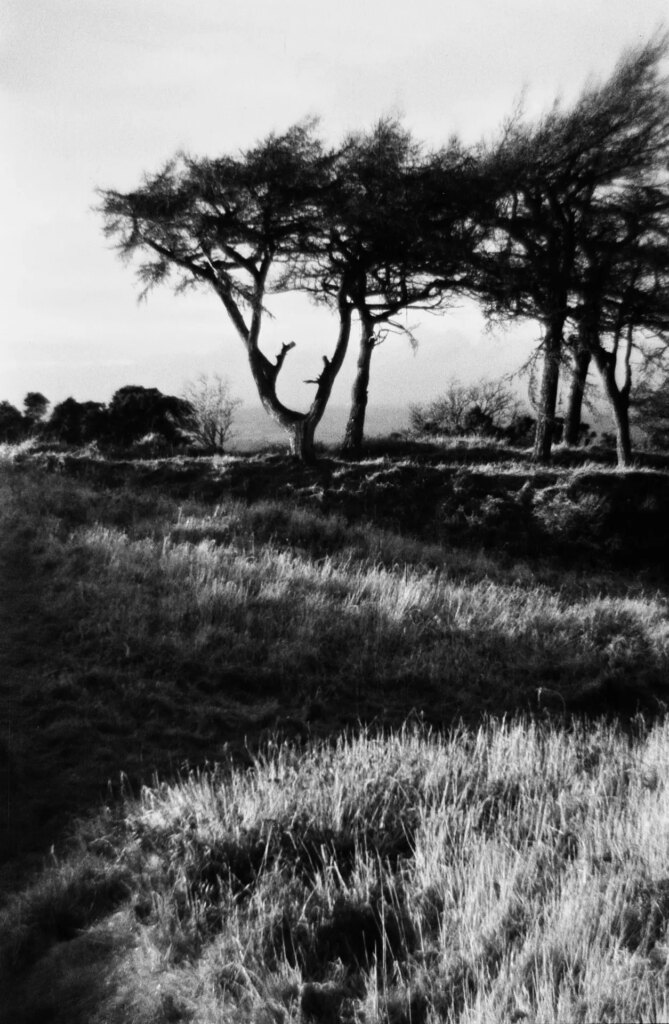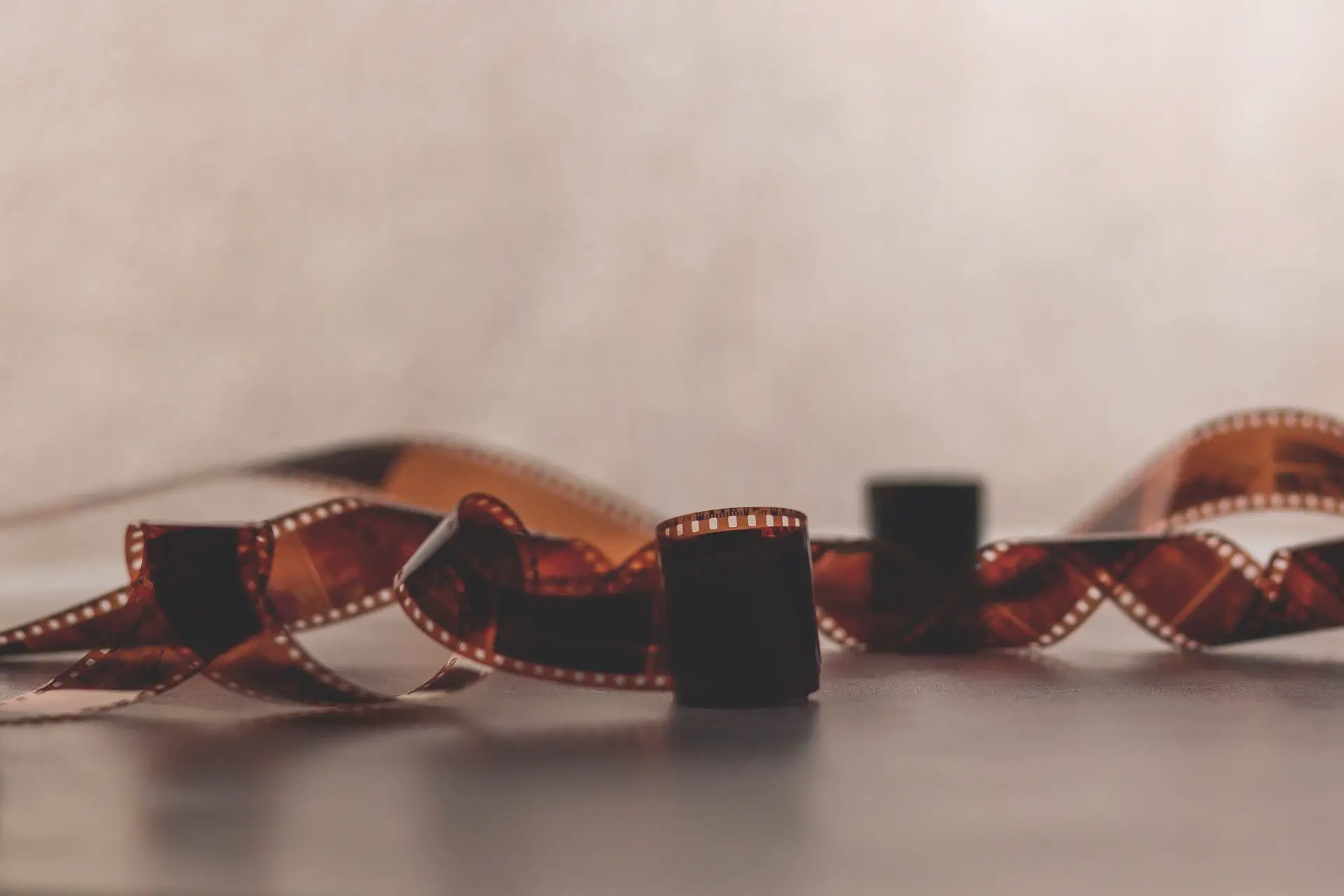When you think of analogue photography – certain things come to mind. The beautiful dance of grain, the methodical snap of a 1960s shutter, and the red light of a still darkroom at night. But one thing that might not emerge is the environment. And more specifically – the impact of analogue photography.
Unless you’ve been living under a rock – you’ll have probably seen the photos of what our digital addiction is doing to the planet. Endless dumping grounds of e-waste, as far as the eye can see. Local residents stumble about stripping the gold, as if survivors of some smartphone-infused tornado.
So when seeing these images, it’s easy to think that analogue photography – which often relies on an economy of recycled tech – is the yang to digital’s yin. And that’s true, to an extent. Analogue photographers aren’t beholden to yearly kit updates, instead scouring eBay for their favourite retro finds. And with analogue as a much more physical practice, photographers are more mindful of their consumption – putting thought into every shot.
But behind the irreplaceable film-look that we all know and love, are a number of issues that may give you some ecological food for thought.
Going Green – What are the Alternatives?
First up, is one that should be obvious to any that have delved into the murky real of home developing – chemicals. It doesn’t take a darkroom genius to see that your standard chemical set isn’t exactly fit for human consumption. In fact, all you have to do is read the label to know that these chemicals aren’t to be messed with, containing a variety of nasties that can be harmful to health if handled improperly.
Whilst most darkroom aficionados are able to minimize these risks through proper use, other species don’t have much of a choice when they are poured down the sink and mingle with water systems. Although proper disposal is legally enforced and encouraged – photochemical waste was a huge environmental issue when analogue was at its height. And with analogue once again growing in popularity, the risks to the natural world inevitably increase.
To counteract this, an entire subculture of making home-made chemicals has arisen. Caffenol is the most popular, made from instant coffee and a few other household ingredients. Despite its unholy stench – caffenol develops black and white film to the same standard as any professional developer. And what’s more – its sustainable, and super cheap to make! So much so, that there exists an entire ‘Caffenol Cookbook’, with information and recipes for all different types of films.

For fixative – pioneering photographers have had success using iodized salt mixed with water. But if this sounds like too much of a risk, acid-free fixatives are available from certain companies. However, the fix will still be full of silver particles after use – and should not be poured down the sink at all costs. Some have had success extracting the silver, by leaving it in a bucket or bottle with steel wool for a week. Or take your spent fix to a local lab, where it can be safely disposed. And for your stop baths – just use water!
But beyond chemicals, there exist a few other impacts to be considered. Waste from used rolls of film can be countered by purchasing a bulk loader, to make your own rolls of film. Equally – if you’re concerned about mountains of waste acetate – some indie film producers are starting to make rolls out of paper.
The Ecology of Grain
Another less evident impact from film is animal gelatine. This was something I only became fully aware of when writing my thesis ‘The Ecology of Grain’. Doing my research, I found that a majority of analogue users were also unaware, with little information existing on the subject. Whilst the amount per roll is tiny, it snowballs into a weighty gelatinous mass for the entire industry. About 6700 London double-decker buses worth, by 2025.
And with the growth of environmental awareness and plant-based diets, the demand for a plant-based alternative to film is at an all-time high. But at present, no such alternatives exist – with producers such as Kodak stating they are not commercially viable.
This research caught the attention of London Alternative Photography Collective, who commissioned me to write a follow-up paper – ‘Stare Into the Caffenol to Reveal Your Future’. In this, I propose an alternative future for analogue photography, based around a network of grassroots darkrooms prioritising and pioneering sustainable methods.
The Northern Sustainable Darkroom
That led to me and my co-collaborator, Emma Bentley-Fox, setting up the Northern Sustainable Darkroom in Leeds, UK. Funded by East Street Arts, the facility’s aim is to green analogue processes, bringing them into the twenty-first century. For example, one of our first projects is to experiment with plant-based alternatives to gelatine. We also hope for the space to be open-access, spreading the word and knowledge on sustainable photographic goodness.

Facing a nail-biting ecological future – with unmitigated wildfires, mass species extinction, and habitat destruction under way – it is more important than ever that we strive for sustainability in all aspects of life. As recent climate action has shown, change is possible – and well within our reach. Analogue photography has always been eager to embrace innovation, and with environmentally-conscious alternatives it should be no different. So now is the time to hold the torch of sustainability high, and let it lead us into a brighter future.
We’re still constructing the darkroom – but are doing some research in the meantime. So if you’d like to take part, fill out our five-minute survey.
And make sure to follow us on Instagram @northernsustainabledarkroom!
Edd Carr is a photographer, filmmaker, and researcher from the North York Moors National Park. Previously a dog walker, he now experiments with sustainable alternatives to analogue techniques.
Share this post:









Comments
Ralph Turner on Northern Sustainable Darkroom: Helping Analogue Go Green – By Edd Carr
Comment posted: 17/01/2021
PS I’m always keen to find out more about the eco impact of my photographic endeavours and potential ways to reduce it’s fallout, so your project sounds very interesting. Thanks again.
Comment posted: 17/01/2021
Comment posted: 17/01/2021
David on Northern Sustainable Darkroom: Helping Analogue Go Green – By Edd Carr
Comment posted: 17/01/2021
I love film, but the cost is heavy in almost every way.
Comment posted: 17/01/2021
Lasse on Northern Sustainable Darkroom: Helping Analogue Go Green – By Edd Carr
Comment posted: 17/01/2021
Keep up the good work!
Comment posted: 17/01/2021
Peter on Northern Sustainable Darkroom: Helping Analogue Go Green – By Edd Carr
Comment posted: 17/01/2021
My switch to digital in 2007 came from guilt regarding the environmental and economic (when I lost all access to a darkroom). I still shoot film 1 roll a month and roll my own film into reusable canisters to assuage this guilt as I love my using M2 and Rich "35" and the je ne sais quoi of film vs digital images but....
Your article has given me hope for the future and perhaps a full time return to film!
Comment posted: 17/01/2021
Joris on Northern Sustainable Darkroom: Helping Analogue Go Green – By Edd Carr
Comment posted: 17/01/2021
Keeping a keen eye on this! Is there any place online that gathers resources on what we can do in each step of the process to make them more sustainable? It seems everyone is still
doing a lot of experimenting.
Alexander Seidler on Northern Sustainable Darkroom: Helping Analogue Go Green – By Edd Carr
Comment posted: 17/01/2021
Im not shure if i understood everything correct. Do people in your country pour chemicals into the sink ?
Nobody ever would do that im my country, im shure.
The impact of film cans is ZERO. This is no argument in a world of nespresso and red bull.
I think the mature impact is the consumption of electricity.
So film users also use a lot for post processing and especially uploading to platforms for sharing -
so the main impact, in my opinion, is a question of quantity. Nothing a film photographer is trying to produce.
Comment posted: 17/01/2021
Andrea Bevacqua on Northern Sustainable Darkroom: Helping Analogue Go Green – By Edd Carr
Comment posted: 17/01/2021
I have to dig out more about this matter because the impact to the environment has been a very important matter to me, since the beginning. At the moment I’m collecting the chemicals in order to bring them to the recycling centre time by time. I swapped the stop bath with citric acid powder (maybe not perfect but hopefully kinder to the environment) and I am going to replace the fix bath with sodium thiosulphate (again, hopefully better than chemicals). I want to know more about what you do because I can’t hear anymore the usual sentence “your little dilution is not going to be a problem “. The world is changing, and hopefully not only in worse.
Bravo Edd.
Comment posted: 17/01/2021
Dmitry Zhilyaev on Northern Sustainable Darkroom: Helping Analogue Go Green – By Edd Carr
Comment posted: 18/01/2021
So what is needed here is a life cycle assessment (LCA) of film vs. digital but when I was looking for one, I couldn't find any. Have you maybe stumbled upon something like this?
P.S. Saying that shooting film might be a more sustainable option compared to digital doesn't imply that we shouldn't try to minimize our impact in any case, of course. So keep it up, I would be interested to see what you will come up with!